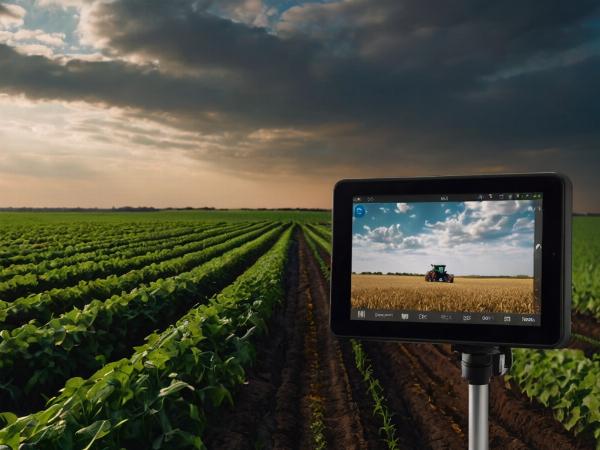Agricultural IoT Growth in 2024: Revolutionizing Farming with Smart Technologies

Strong 8k brings an ultra-HD IPTV experience to your living room and your pocket.
In 2024, the Agricultural Internet of Things (IoT) is transforming the farming landscape, driving unprecedented growth and innovation. As global challenges like climate change and population growth put pressure on food production systems, the adoption of IoT technologies in agriculture is accelerating, offering promising solutions for more efficient, sustainable, and productive farming practices.
Understanding Agricultural IoT
Agricultural IoT encompasses a variety of technologies that connect devices and sensors to collect and analyze data in real-time. From soil moisture sensors and weather monitoring systems to drones and autonomous machinery, these technologies provide farmers with actionable insights that enhance decision-making processes.
Factors Driving IoT Growth in Agriculture
Several key factors are contributing to the rapid growth of Agricultural IoT in 2024:
1. Rising Food Demand: The global population is expected to reach 9.8 billion by 2050, significantly increasing the demand for food. IoT technologies help farmers boost crop yields and optimize resource use, making it possible to meet this rising demand more efficiently.
2. Climate Change and Sustainability: As climate change impacts weather patterns and agricultural productivity, IoT technologies enable precise monitoring and management of environmental conditions. This helps farmers adapt to changing climates and implement sustainable practices that reduce waste and conserve resources.
3. Advancements in Technology: The continuous evolution of IoT devices, coupled with improvements in data analytics and connectivity, has made these technologies more accessible and effective. Integration with artificial intelligence (AI) and machine learning enhances predictive capabilities, allowing farmers to anticipate and address issues proactively.
4. Government Support and Initiatives: Many governments are recognizing the potential of Agricultural IoT to enhance food security and sustainability. Supportive policies, subsidies, and grants are encouraging the adoption of smart farming technologies across the globe.
Key Applications Driving Growth
1. Precision Agriculture: Precision farming involves the use of IoT sensors and GPS technology to monitor and manage crops at a granular level. This includes tracking soil conditions, weather, and crop health, enabling farmers to apply inputs like water and fertilizers more efficiently.
2. Smart Irrigation Systems: Automated irrigation systems equipped with IoT sensors adjust watering schedules based on real-time data, such as soil moisture and weather forecasts. This ensures optimal water usage, reducing waste and improving crop health.
3. Livestock Monitoring: IoT devices can track the health, location, and activity of livestock. This improves animal welfare, enhances productivity, and helps prevent the spread of diseases.
4. Supply Chain Optimization: IoT technologies enhance traceability and transparency in the agricultural supply chain. From farm to table, tracking systems ensure the quality and safety of food products, reducing losses and increasing efficiency.
Overcoming Challenges
While the growth of Agricultural IoT is impressive, it does come with challenges. Data security and privacy concerns, high initial costs, and the need for reliable connectivity in rural areas are significant obstacles. However, ongoing advancements in technology and infrastructure are gradually addressing these issues.
The Future of Agricultural IoT
The future of Agricultural IoT looks bright, with continued growth and innovation on the horizon. As IoT technologies become more affordable and accessible, even small-scale farmers will be able to leverage these tools. The rollout of 5G networks is expected to further enhance IoT capabilities, enabling faster data transmission and more reliable connectivity.
For More Info: - https://www.gmiresearch.com/report/global-agriculture-iot-market/
Conclusion
In 2024, the growth of Agricultural IoT is revolutionizing farming, offering new ways to tackle the challenges of modern agriculture. By harnessing the power of data and connectivity, farmers are achieving higher efficiency, sustainability, and productivity. As we move forward, the integration of IoT in agriculture will play a crucial role in ensuring a secure and sustainable food supply for future generations.
Note: IndiBlogHub features both user-submitted and editorial content. We do not verify third-party contributions. Read our Disclaimer and Privacy Policyfor details.


